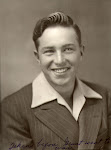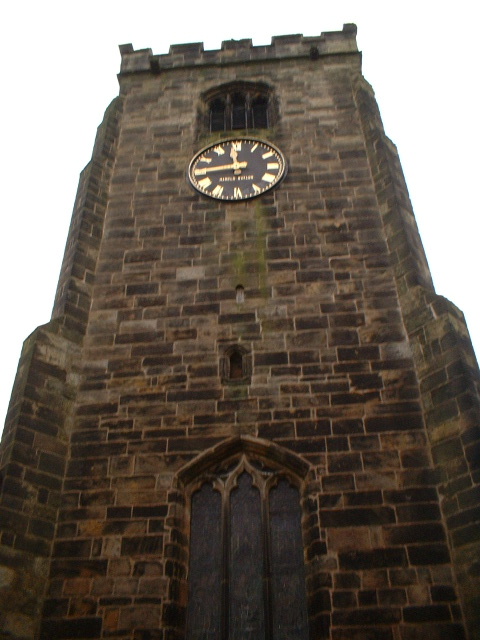George Albert Pincock was born in Weber County , Utah
He spent the early days of his life on the old homestead farm, which is now a part of Ogden
As a tousle headed bare-foot boy, he herded his fathers cattle on the prairy like stretches and hills to the south of Ogden City
As his father before him, the pioneer spirit which reaches out into the wild frontie region, was in his blood. Driving a pair of White mules he set forth in 1884 to find new lands. Now that new land was the spacious valley of the Snake River , into which few settlers had ventured ahead of him.
He returned to Ogden , and on October 20, 1886, he was married to Lucinda Elizabeth Bingham, at the Logan Temple Utah , for the Snake River Valley Bingham County
To begin the tilling of this extensive tract of land he had one team and a hand-plow; of necessity he was compelled to build a wooden harrow, the teeth being made of Hawthorne
hands. But who was to drive the team, there was only one solution for this, his wife would have to fill the position. In this way many acres were sown with less effort and in a much shorter time, than by the previous method.
There were very many pleasant romantic hours spent after a days work was done, for example, one evening he killed a deer withing a mile of his home, and many a long winter evening was spent toasting this delicious wild meat before the fire, while his wife read aloud the Book of Mormon. Then again in the early spring, they found something to add a touch of color to their lives. Across the swollen waters of the North Teton River lived two of his brothers whom they had not seen for months. They decided to row across the river and see them. Fearlessly they launched the boat made for them and began their journey to the opposite shore, the mad current snatched the boat and swept it recklessly out into the stream. As the craft was sweeping past a clump of willows, his brave wife managed to catch hold of an out stretched willow, while he held the ores to keep it from tipping. The sad part of this experience came when they found themselves anchored on their own side of the river. They returned to their home, wiser for their experience and thankful indeed for their safe excape from the dreadful torrent.
Here he has developed and improved his valuable farm properly, and had been actively engaged in agricultural persuits, stock raising and dairying through the long intervening years. He had been prominently engaged in the civic, industrial, educational, and religious development of this favored section of the state.
He was a great lover of good stock which is shown by his interest in importing of pure bread animals. He made a trip to Columbus Ohio Idaho Wisconsin in 1918 and returning with two carloads, to Washington in 1920, purchasing two more carloads and in Ohio in 1922, purchasing two more carloads to be distributed among farmers of this section as well as into the Teton Valley
He has always shown a lively interest in education, having served as trustee of the Sugar School DistrictRicks Academy
Many times; while he was bishop of the Wilford ward, when the people were unable to give enough to make up the required amount, he was glad to help by selling some of his stock to make up the required amount. While he was yet bishop of Wilford he had much the same experience. He was chairman of the building committee for the new building of that ward. At one time during its construction he was compelled to be away from home for a while, upon returning he found that some defective workmanship had been put into the building, immedicately he demanded that it all be torn down and done over, He said, “We aren’t building this house to fall down.”
He supervised many irrigation projects, and was one of the first men to advocate sub irrigation in this section of the country. He was the first man in this locality to raise sugar beets. He raided them for stock several years before the factory was built.
He was a loyal supporter of this industry and was a member and also agricultural supertendant for the Utaho Idaho Sugar Co. in this locality. He has always given his influence and cooperation in the furtherance of measures and enterprises projedted for the general good of the community.
He was always a great believer in the future of Idaho
In addition to being chose conselor to the bishop of Wilford ward on July 16, 1893, he was made bishop of that war in 1898. He served as Stake Superintendant of Religon class in this stake for many years. As Ambassidor of truth he filled two mission to the states. One Kentucky
At the time of his death he was a member of the high council of the fremont
George Alfred Pincock and his excellent wife were the proud parents of eleven children, ten of whom are still living. They also have thirty seven grand children. Just three months before he died he experienced the joy of having all of his children visit him in a group; though physically weak, he stood up and bore a strong testamony of the gospel. He also gave them some splendid fatherly advise, which he was so accustomed to giving. Among the things he told them, were, “Don’t see in your companions the little petty faults, they, have but, to hold fast to each other and be faithful and true to the covenants we have made with each other and God.
Just a little over two weeks before his death, he was permitted to attend fast meeting in the ward. He blessed his little grandson, naming him after himself. While at this meeting, under the inspiration of his calling, he bore a strong tetamony and gave council and advice that will long be remembered by all present, which further evidences of his sterling character and worth.
He departed from this life November 15,1928, surrounded by his wife and family. Heart trouble being the cause of his death.
The eleven children born to Brother Pincock were.
1. Martha Isabelle— born 10 July 1887
2. Lottie May born 9 May 1889
3. Lucinda Elizabeth born 8 Oct. 1891
4. George Sanford born 11 Apr 1893
5. William Albert born 21 Feb 1896
6. Wealthy Jane born 9 Apr 1899
7. Douglas born 27 Sep 1900
8. John Lewis born 7 Oct 1902
9. Louis born 24 Mar 1904
10. Mark Lavaine born 19 Sep 1907
11. Grant Bingham born 26 Sep 1910 Died 10 May 1912
Transcribed by: Larissa Barsalou – Summer 2002







